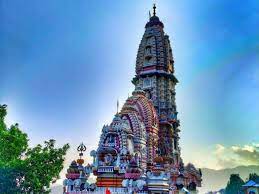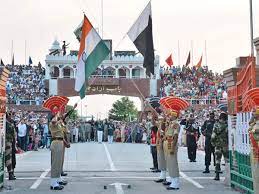GANGAUR FESTIVAL

Gangaur
festival is a folk festival in Rajasthan that is all about celebrating the
marriage and love of Goddess Gauri and Lord Shiva. Married women worship
Goddess Parvati for their husbands' long life and good health, while unmarried
women worship the goddess to get a good husband.
WHY IS GANGAUR FESTIVAL CELEBRATED?
The festival
also marks the celebration of spring and harvest. Gana symbolizes Lord Shiva,
and Gangaur represents Lord Shiva and Parvati together. According to legends,
Gauri won the affection and love of Lord Shiva through her deep devotion and
meditation. And after that, Gauri goes to her ancestral home during Gangaur to
bless her friends with marital bliss and stays for 18 days, there is a big
celebration on the day of departure, and Shiva comes to take her back. The
Gangaur festival usually lasts for 18 days, as people in most regions start
performing rituals a day after Holi. Festivities occur in Udaipur,
Jaisalmer, Jodhpur, Nathdwara, and Bikaner.
HOW IS GANGAUR FESTIVAL CELEBRATED?
The Gangaur
festival takes place in the month of March or April, starts a day after Holi, and lasts for eighteen days. This festival of Gauri Pujan is celebrated with
full pomp in all the provinces of India with little or no name difference. On
this day women wear beautiful clothes and jewelry. On this day the married
women observe a fast till noon. For this, a twenty-four angul wide and
twenty-four angul long square altar is made at a holy place in a room of the
house and the chowk is completed with turmeric, sandalwood, camphor, saffron, etc. Then after making (establishing) Gauri i.e., Parvati from sand, on this
establishment the things of Suhaag- glass bangles, vermilion, roli, henna,
tika, bindi, comb, mirror, kajal, etc. are offered.
Women make
clay images of Shiva and Parvati, dress them in beautiful clothes, worship
them, observe a day-long fast for marital happiness, and prepare delicious
dishes for the family. For the local people of Rajasthan, Goddess Parvati
represents perfection and conjugal love; In such a situation, the Gangaur festival
has special significance for them. The first and foremost tradition of Gangaur
is to collect ashes from the sacred fire in earthen pots (kunds) and sow wheat
and barley seeds in them.
After seven
days women make colorful idols of Gauri and Shiva while singing mesmerizing
Rajasthani folk songs. In some families, the idols are preserved for years and
are decorated and painted on auspicious occasions. On the evening of the
seventh day, a rally is taken out by unmarried girls by placing a lamp inside
an earthen pot called Ghudaliya. Girls walking around are blessed with small
gifts like sweets, jaggery, a little currency, ghee or oil, clothes, and
jewelry.
This
continues for the rest of the day and the pottery is broken on the last day of
the festival. For all 18 days, newly married women fast for the whole day while
other women keep fast by eating once a day. The festive atmosphere reaches its
peak during the remaining three days, when women adorn themselves with clothes,
adorn their hands with henna (mehndi), and also decorate their idols for
Gangaur Puja. Sinjara is a gift sent by married women's parents, including sweets, clothes, jewelry, and other decorative items to their
daughters. The last day of Gangaur is grand, with many tourists and locals
gathering to watch a procession of large numbers of women carrying the idols of
Gauri and Issar on their heads to a lake, river, or garden, and Farewell is
given to Shivji. Their idols are immersed in water.
You may like post

HIDDEN INDIAN SITES WORTHY OF UNESCO
Exploring India’s Sites That Should Be on the UNESCO World Heritage List

EMBARK ON A DIVINE JOURNEY TO ICONIC RAM TEMPLES THIS RAM NAVAMI
Exploring the Pilgrimage to Renowned Ram Temples in India During Ram Navami








